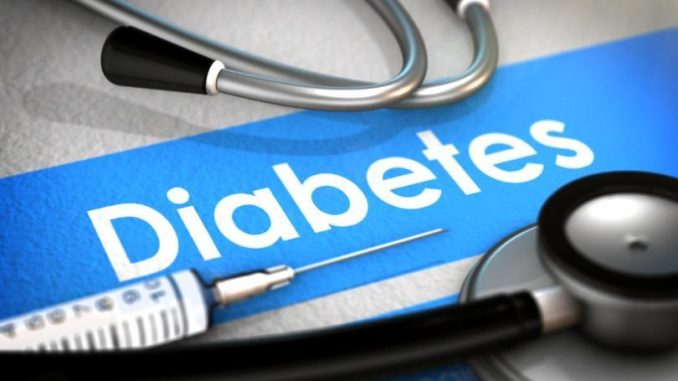
Table of Contents
Key Concept:
- According to World Health Organization (WHO), Diabetes is a chronic disease that occurs either when the pancreas does not produce enough insulin or when the body cannot effectively use the insulin it produces. Insulin is a hormone that regulates blood sugar. Hyperglycaemia, or raised blood sugar, is a common effect of uncontrolled diabetes and over time leads to serious damage to many of the body’s systems, especially the nerves and blood vessels.
- Diabetes is a condition or chronic disorder, which impedes the effective functioning of the body to process blood glucose or blood sugar.
- Diabetes also means abnormality in the use of insulin by the body.
WHO Diagnostic Criteria for Diabetes (Diabetes Mellitus):
| Diabetes | Impaired Fasting Glucose | Impaired Glucose Tolerance | |
| Fasting plasma glucose | >7.0 mmol/L
(>126 mg/dl) |
6.1-6.9 mmol/L
(110-125 mg/dl) |
<7.0 mmol/L
(<126 mg/dl) |
| 2-hour plasma glucose | >11.1 mmol/L
(>200 mg/dl) |
<7.8 mmol/L
(<140 mg/dl) |
7.8-11.1 mmol/L
(140-200 mg/dl) |
Global Facts About Diabetes:
- Diabetes kills more Americans every year than AIDS and breast cancer combined
- The probability of developing type 2 diabetes was reported to be as much as 6 times higher in South Asians than in Europeans, with a number of factors that are mostly linked with lifestyle.
- In the United States 2018, the estimated number of people over 18 years of age with diagnosed and undiagnosed diabetes is 2 million.
- According to WHO, in 2016, an estimated 1.6 million deaths were directly caused by diabetes. Another 2.2 million deaths were attributable to high blood glucose in 2012.
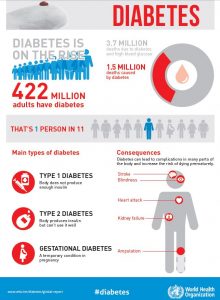
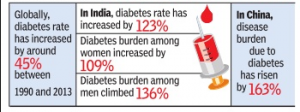
- A healthy diet, regular physical activity, maintaining normal body weight and avoiding tobacco use are ways to prevent or delay the onset of type 2 diabetes.
- Nearly half of all deaths attributable to high blood glucose occur before the age of 70 years. WHO extrapolates that diabetes was the seventh leading cause of death in 2016.
- Diabetes is treatable and its consequences avoided or delayed with diet, physical activity, medication and regular screening and treatment for complications.
- Diabetes is a major public health issue around the globe. An estimated 382 million individuals have diabetes, and the worldwide prevalence is projected to increase to nearly 600 million in less than 25 years
Types of Diabetes
According to World Health Organization (WHO), there are different types of diabetes.
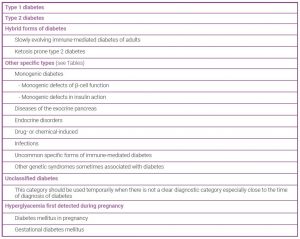
However, in this article, we are only going to discuss about some common types of diabetes. Basically, there are mainly three major types of diabetes. They are:
1. Type I Diabetes
- Formerly known as Insulin- Dependent Diabetes Mellitus (IDDM)
- In Type I diabetes, body attacks the cells in the pancreas. Therefore, pancreas cannot make any insulin. i.e. the body does not make/produce insulin.
- Deficiency of insulin production due to the destruction of beta cells in the pancreas.
- The exact cause is still unknown. However, it is considered as an autoimmune disease.
- Requires daily insulin admin.
- May occur at any age, generally appears below the age of 15
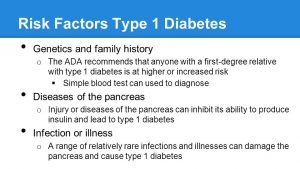
Symptoms:
- Excessive excretion of urine (polyuria)
- Thirst (polydipsia)
- Constant hunger
- Weight loss
- Vision changes
- Fatigue
- Slow healing of wounds or sores
2. Type II Diabetes
- Formerly known as Non-Insulin-Dependent Diabetes Mellitus (NIDDM)
- In Type II diabetes, either the body cannot make/produce enough insulin or the produced insulin does not work properly.
- Caused due to loss of beta cell responsiveness to glucose that leads to decrease in the release of insulin by the pancreas.
- Occurs usually after the age of 40 but nowadays, it is occurring among the children.
- Symptoms are similar to Type I diabetes.
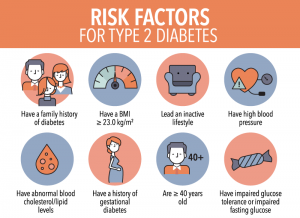
3. Gestational Diabetes
- Gestational diabetes is hyperglycemia with blood glucose values above normal but below those diagnostic of diabetes, occurring during pregnancy.
- Women with gestational diabetes are at an increased risk of complications during pregnancy and at delivery.
- Pregnant mothers and their children are also at increased risk of type 2 diabetes in the future.
Factors Contributing to Type I and Type II Diabetes:
- Obesity
- Race
- History of Cardio Vascular Disease
- Physical inactivity
- Family History
- Gestational Diabetes
- Sedentary Lifestyle
- Prediabetes
- Age
- Abnormal cholesterol levels
Complications Due to Diabetes Results in:
- Cardiovascular disease
- Nerve damage
- Kidney damage
- Diabetic retinopathy
- Skin conditions like bacterial and fungal infections
- Loss of hearing ability
- Alzheimer’s disease
- Depression
- Preeclampsia in pregnant mothers.
Preventive measures for diabetes:
- Less intake of sugary items and refined carbs
- Increase active physical exercise
- High intake on water and normal fluids as the primary beverage
- Maintain normal body weight
- Quit smoking
- Avoid sedentary behaviors
- Include high fiber diet
- Boost vitamin D levels for blood sugar control
- Minimize the intake of fast foods or processed foods
- Include polyunsaturated fats like vegetable oils, nuts and seeds i.e. good fats rather than trans fats like packaged baked goods, fried foods i.e. bad fats for a healthy diet
- Limit red meat and avoid processed meat; choose nuts, whole grains, poultry, or fish instead
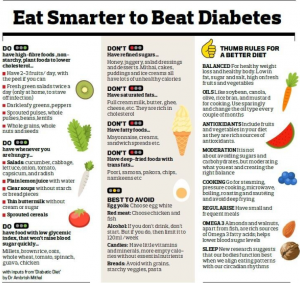
Mitigation measures for diabetes:
- Establishment of integrated care management programs
- Highlighting more targeted intervention programs
- Simplifying treatment regimens
- Reducing side effects of anti-diabetes drug
- Control of risk factors affecting diabetes
- High investment in initiatives to improve observance to therapy among patients with diabetes
- Telephonic support and hospital- based adherence education on diabetes
- Organizing coaching programs by the pharmacist on diabetes causes, consequences, and medications
References and For More Information:
http://care.diabetesjournals.org/content/39/Supplement_1/S6
https://professional.diabetes.org/content/fast-facts-data-and-statistics-about-diabetes
https://www.ncbi.nlm.nih.gov/pmc/articles/PMC4459262/
https://www.who.int/news-room/fact-sheets/detail/diabetes
https://www.medicalnewstoday.com/articles/323627.php
https://www.diabetes.co.uk/south-asian/
https://www.mayoclinic.org/diseases-conditions/diabetes/symptoms-causes/syc-20371444
https://www.healthline.com/nutrition/prevent-diabetes#section13